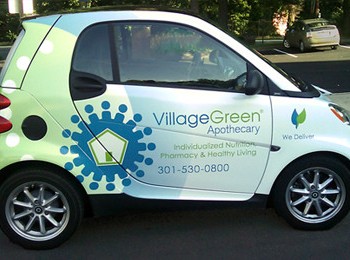Find out which foods to limit or avoid and which may be the underlying culprit to congestion, runny nose, itchy eyes, and more. You may have continual congestion and an easy fix is to review which foods you’re eating and then to be aware of these foods when you eat them in order to recognize the cause and effect they may have on your sinuses.
Quick Points to Note:
1). Surface mold begins to develop on bread after a day.
2). Leftovers begin to develop mold in your refrigerator and I try to limit leftovers to the next day and certainly wouldn’t go more than two days.
3). There are numerous foods that are notorious for molds, these may be some of your favorite foods.
Symptoms of Mold Intolerances
- Dizziness
- Headache
- Nausea
- Stuffiness, congestion, and sinus pain
- Warm feeling in the neck or face
Within 15 minutes of eating one of these offending foods below, if you feel your sinuses building congestion, a warm feeling in your sinuses, and any headache or other symptoms listed above, take note of what you just ate. Keep a food diary so that you may become your own health champion for how you feel. These are the quick symptoms that you may feel, but what most people don’t realize is how these can make you feel for days after eating them. You may feel more tired, additional inflammation and like you’re just not yourself.
The Top 10 Foods High in Fungal Molds
1). Aged Cheeses – This goes without saying, the more that cheeses age, the more mold they acquire. The moldiest are cave cheeses and blue cheese, gorgonzola, and Roquefort. The blue veins are actually edible forms of mold which are injected into the curd process during processing. Cheeses with less mold include: cottage cheese, mozzarella, provolone, and ricotta.
2). Mushrooms – Mushrooms are a fungus, so by definition they’re a mold. Many sinus patients feel sinus pressure or congestion within 10 to 15 minutes of eating mushrooms.
3). Canned Peanut Butter – If you love peanut butter, I’d suggest switching to freshly ground almond butter from Whole Foods or Natural Grocers, why? Shelled peanuts sitting in large containers and then processed into butter can leave fungal molds.
4). Canned Orange Juice and Juices – If you’re going to have orange juice, make sure it’s freshly squeezed. The same holds true for oranges and other fruit juices as it does peanuts. After peeling the fruits and allowing them to sit during processing allows time for molds to build. In addition, in the fruit canning process, many manufacturers add a mold enzyme during processing! Also, many fruit juices have added sugars to spike your blood sugar levels. All of these factors make this a top 5 food to avoid!
5). Tomato Products – Many canned and bottled tomato products including juice, sauce, paste, and ketchup are made with moldy tomatoes.
6). Dried Fruit – Raisins, apricots, figs, prunes, and other dried fruits develop surface molds easily. The best fruit is always fresh fruit.
7). Breads and Malted Products – When you see something that is listed as “malted,” this is a mold. Dough conditioners are also moldy and sourdough breads have high mold contents. Bread develops a surface mold after just one day.
8). Fermented Foods – These include soy sauce, lactaid (milk additive), malt extract, and citric acid (a common food additive to preserve freshness, which is not derived from citrus).
9). Beer and Alcohol – The darker the beer, the higher the mold content. Most sinus sufferers would do well to stay away from beer and alcohol because of the mold content. If you have a beer, have a light beer. The porters, stouts, and hoppy IPA’s will have higher mold contents. The same holds true for wines. A white wine has less mold than a heavy red wine.
10). Hamburger – Only eat freshly ground, grass-fed hamburgers. Hamburgers that have been ground and packaged or even sitting in a meat case can form fungus. It’s like a leftover that is sitting, inviting fungus production.
11). Processed Meats – All processed meats have nitrates, which have been shown to cause dizziness, headaches, nausea, and the long-term effects can lead to chronic conditions. Processed meats including hot dogs, salami, bologna, and sausage are also high in fungus.
Be Aware and Thrive
By making different food choices and being aware of what you eat, you can direct how you feel. Eating any or an abundance of these foods can affect how you feel immediately, but also for up to 3 days later. Note how many of these foods you might normally have together, increasing your mold exposure:
- Wine, cheese, malted bread, and processed meats (this is the 3 alarm mold hangover).
- Hamburger with melted blue cheese and mushrooms, with a dark micro-brewed beer.
- PBJ and glass of milk (the milk has a casein protein, which magnifies allergies. This is a one-two punch recipe for feeling multiple symptoms).
Other Items to Consider:
- Molds thrive on sugar
- Anything will begin the mold process within 24 hours
- Buy the freshest fruits, vegetables, and foods
- Buy in smaller quantities vs. having items in your refrigerator for weeks
- While some molds you can see, like the fuzzy green mold on breads, others are not so noticeable. A good rule of thumb for leftovers is a two-day rule (one is better).
Why Do Molds and Fungi Exist?
Molds are a type of fungus and nature’s way of breaking down dead items to return nutrients and elements back into the environment. The best way to let molds do their work is to not to allow them to thrive in your refrigerator, but rather place your common household wastes into a composter and let molds and microbes do their job to replenish the soil in your garden.
Molds and fungi thrive in a dark, moist environment. You’ll notice new growths of mushrooms in these places. Household molds also thrive in this type of environment and can become airborne and cause issues for many individuals. One way to combat this is to use a mixture of 1 teaspoon of tea tree oil to one cup of water. Mix this in a spray bottle. Then spray in moist areas to remove molds and odors from your house. Tea tree oil is nature’s antifungal and antibacterial secret.
Sinus Survival’s Tea Tree Oil is an organic medicinal tea tree oil with thousands of uses! I use it all of the time.
Wrap-Up
- Identify and limit the fungi in your life and limit the symptoms you may be feeling.
- Be aware of how you feel within 15 minutes of eating these common fungi-ridden foods. Then next time, either choose another food or limit the amount that you have.
- Find other “trade-ins” that you can make for these fungal foods. For example, trade-in the freshly ground almond butter for your jar of peanut butter. Trade-in that glass of milk with it for a glass of refreshing rice, coconut, or almond milk!






Leave a Reply